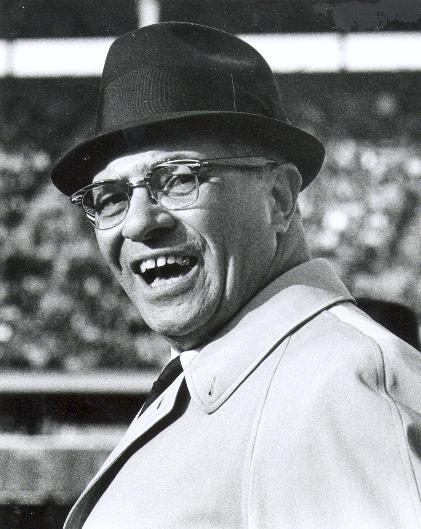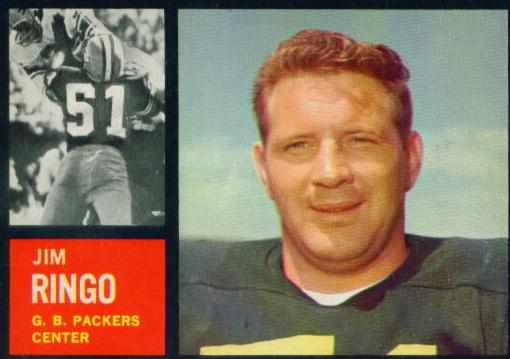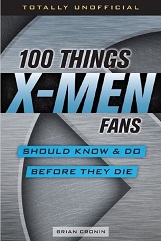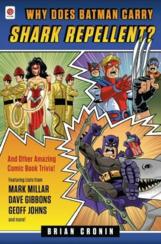Did Vince Lombardi Once Trade a Player Five Minutes After Learning That the Player Had Hired an Agent?
Here is the latest in a series of examinations into urban legends about football and whether they are true or false. Click here to view an archive of the football urban legends featured so far.
FOOTBALL URBAN LEGEND: Vince Lombardi traded a player five minutes after learning the player had hired an agent to represent him in contract negotiations with the Packers.
Vince Lombardi was the larger-than-life head coach of the Packers from 1959-1967 who won five National Football League (NFL) championships (plus the first two Super Bowls) in that time span.

Soon before he died, former New York Giants placekicker (and longtime NFL announcer) Pat Summerall released a book (co-written by Michael Levin) about what he learned from his time spent with Lombardi and Tom Landry when both coaches were assistants on the Giants, Giants: What I Learned About Life from Vince Lombardi and Tom Landry, Summerall discussed how different it was for players when they tried to negotiate their contracts during the 1950s and 1960s:
Negotiating didn’t always work out, though. As I’m sure you’ve heard, one year, Jim Ringo, the all-pro center for the Packers, went into negotiations with Lombardi when he was the Packers’ head coach. He brought his agent to the meeting. Lombardi said, “I don’t negotiate with agents. Hold on, let me make a phone call.” He turned away, picked up the phone, and the moment he hung up he said, “I told you I don’t negotiate with agents. You’ve just been traded to Philadelphia.” Ringo was one of his best players and all-pro for several years, but Lombardi chose to trade him rather than deal with his agent. I think it was sort of an unwritten rule at that time not to bring others into negotiations because nobody had agents or other people speaking for them.
Summerall is correct in noting that this is a very popular story, but it also happens to not be true.
Jim Ringo was drafted in the seventh round of the 1953 NFL Draft. Somewhat small for an offensive lineman (6 feet 2 inches and 232 pounds), Ringo made up for any size problems through his speed and great blocking skills. In 1957, Ringo made his first Pro Bowl and was selected as a first team All-Pro. He was a Pro Bowler in 1958 again and was a second team All-Pro. During his career, to that point, though, the Packers were a combined 20-52-2. Things would soon change with the arrival of new head coach Vince Lombardi in 1959. When Lombardi came to the Packers, Ringo was his only All-Pro, but luckily for Ringo and the Packers, a great center was just what Lombardi needed. You see, Lombardi had developed a play while the offensive coordinator (they did not have that term back then, but that’s what Lombardi was) for the New York Giants called the “power sweep.” Essentially, the guards (and the fullback) would create a blocking convoy for the halfback to run behind (or if the fullback got the ball, then the halfback would take the fullback’s blocking role). They would seal off the defenders so that the halfback could run without having to worry about the defensive tackles – they would theoretically create lanes for the halfback to run through (the famous Lombardi quote is “run to daylight,” which means run to the opening). The tight end would be responsible for blocking the linebacker, allowing the halfback to determine whether he wanted then to cut inside or outside. It is a very simple play in theory, but in practice you need total dedication from the team. The play involves reading defenses perfectly, because the guards have to adjust to what the defensive alignment is – if they are wrong, they won’t be in the right position and the defensive tackles will penetrate and pummel the halfback. In the power sweep, the player who determines where the guards go is the center, so the ideal center for the power sweep is a fast, quick-thinking player who is a great blocker. That describes Jim Ringo to a tee, and he (along with guards Jerry Kramer and Fuzzy Thurston) helped make halfback Paul Hornung and fullback Jim Taylor stars (and eventual Hall of Famers) and helped the Packers to two NFL championships (in 1961 and 1962). Ringo did well for himself, star-wise, as well, as he made the first team All-Pro in Lombardi’s first five years with the Packers (also, paired with quarterback Bart Starr, Ringo was able to please please all the Beatles fans out there with a Ringo-Starr tandem).

In 1963, though, Ringo was now 32 years old and clearly losing a little of his great quickness. In addition, with his career winding down, Ringo was interested in playing closer to his home near Philadelphia. He was not necessarily looking for a trade, but he did want a raise on his salary, and if the Packers were not interested in giving him more money, he would not mind being dealt to a team closer to home. However, in the negotiations, Ringo dealt only with Pat Peppler, the Packers director of player personnel, not Lombardi himself. Lombardi, for his part, contemplated the situation for weeks before determining that the best cause of action would be to give Ringo what he wanted and also to get the Packers younger. In the deal with the Eagles, the Packers gave up fullback Earl Gros along with Ringo and acquired young linebacker Lee Roy Caffey, who would go on to be an All-Pro himself and a first round draft choice that eventually became fullback Donny Anderson, who made a Pro Bowl as a Packer. Caffey and Anderson are both in the Green Bay Packer Hall of Fame.
Both Peppler and Ringo later noted that the confrontation with Lombardi and Ringo never took place, and in fact, even Lombardi admitted it to a friend of his, stating, “Hell, no, the trade didn’t take place in five minutes. That’s no way to general-manage a football team.” That was privately, though. In public, Lombardi totally confirmed the story to reporters when asked about his take on agents and players, “Yeah, yeah, yeah! They both get out of my office in a hurry. And the one with the ultimatum, if he does not relent, gets traded!” Peppler noted that Lombardi made a point of spreading the story, with the hope that it would dissuade other players from hiring agents or making strong contract demands. While the story was popular at the time, it became even more popular over the years as agents became a bigger part of professional sports. The public tends to have poor reactions to players negotiating to become millionaires, and a lot of that ire gets directed at agents. So it becomes a very comforting approach to be able to take a nostalgic look at the past and say, “Lombardi never would have allowed this!”
Interestingly, in 2002, Ringo actually denied even using an agent with Peppler. A player using an agent in 1963 would be quite rare, especially if they were not a star quarterback or running back, but it is believable that Ringo might have used one, as he was a popular veteran player. It would be a real hoot, though, if none of the story turned out to be true! Enough reports, though (including Peppler) have included the fact that Ringo was using an agent (also including earlier versions of the story by Ringo himself) that I think he likely was.
The legend is…
STATUS: False
Thanks to Pat Summerall, Michael Levin, David Maraniss (whose brilliant Vince Lombardi biography, When pride still mattered: a life of Vince Lombardi, was an important resource), John Maxymuk and Donald T. Phillips (whose Lombardi biography, Run to Win: Vince Lombardi on Coaching and Leadership, is no slouch, either) for the information for this piece.
Feel free (heck, I implore you!) to write in with your suggestions for future urban legends columns! My e-mail address is bcronin@legendsrevealed.com





